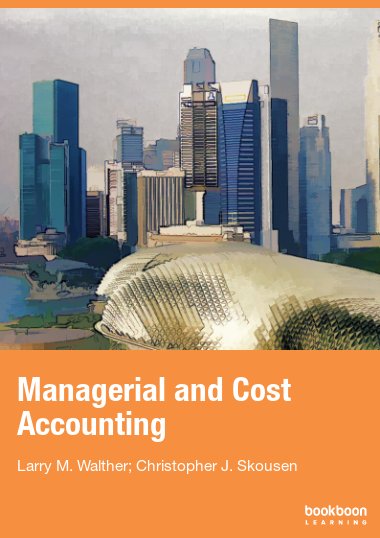This book is the sixth of seven books which introduces the basic principles of accounting. This book introduces managerial accounting, with a primary focus on internal business reporting, decision making, planning, strategy, budgets, and cost control. Cost-volume-profit analysis, variable cost, fixed costs, mixed costs are introduced. Break-even analysis, contributions margin, target income calculations, and sensitivity analysis are all discussed in detail. In addition, product costs, job costing, process costing, and activity-based costing are introduced.



